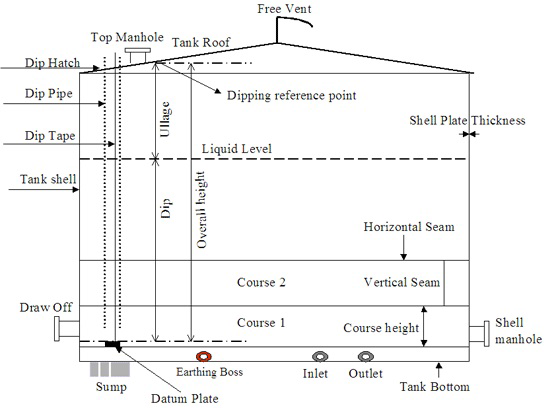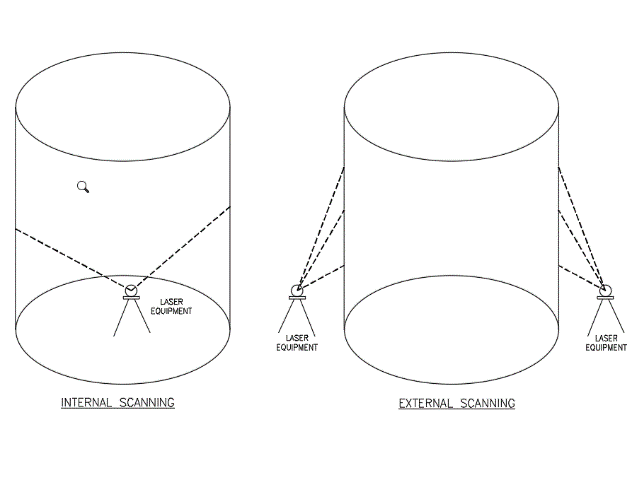How to do Storage tank Calibration and Tank strapping….?
This tank calibration method is laid down in API Manual of Petroleum measurement Standards Chapter 2 Section 2D.EODR Laser scanning commonly called LiDAR (Light Detection and Ranging) and its an advance method of Total Station. Working principle is Laser beam from Laser source detects object and it will create x,y,z coordinates and Laser equipment have vertically rotate mirror on horizontally rotating base, it can capture all the objects within the limit of 120mtr at 360 degree.Preliminary set up for calibration is Ensure that all the calibrations area and equipment are free from gases, dust and for ensuring the safety requirements at site, wear all the basic PPE’s of eye protection, Hard hats, Gloves, Protective clothes, Fall protection etc.
Preliminary Activities:
Prior to taking any measurements inside the tank or tank Level Gauging, the following shall have been completed,
- Repairs and NDT shall have been completed and all fabrication works to the tank has been finished.
- Hydrostatically tested in accordance with the internationally accepted procedures and method statements
- All internal cleaning works shall have been satisfactorily completed, dried and absence of scaffoldings.
Storage tank Calibration Procedure:
Sometimes called strapping. Calibration is the science of determining the exact true volume of a storage tank. It is key to obtaining accurate measurements of quantity. Without accurate calibration tables, even the best gauging systems and the most accurate manual measurements are of little value.

Storage Tank Terminologies:
Datum Plate: A metal plate located along the vertical axis descending from the dipping reference point, providing a fixed contact surface from which liquid dip measurements are taken.
Dip Hatch: An opening on top of a tank through which dipping, ullaging or sampling operations are carried out.
Dip Pipe: A hollow metal pipe fitted below the dip hatch which projects downwards and ending near the bottom of the tank used for level gauging measurements. It is directly above the datum point and acts as a guide for the dip weight, particularly, when obstructions have to be avoided. It is compulsory for a floating roof tank.
Shell Plate Thickness: This is the value of thicknesses for each course as obtained from the ultrasonic thickness measurement (UTM) machine
Dipping Reference Point: This is a clearly marked point on the dip hatch. It is normally located along the vertical axis ascending from the dipping datum point to indicate the upper reference position to which ullage is measured.
Overall Height: This is the vertical distance between the dipping reference point and the datum point which shall be marked on the tank at the dip hatch.
Dip: It is vertical distance between the datum point and the liquid level.
Ullage: The vertical distance between the liquid level and dipping reference point. It can also be called outage.
Course: One circumferential ring of plates in a tank.
Deadwood: This refers to any tank fitting in a tank. It is called ‘positive’ when the capacity of the fitting adds to the effective capacity of the tank, or ‘negative’ when the capacity of the fitting subtracts from the effective capacity.
Level Gauging: It is a level /measurements of liquid in large storage tanks and vessels for quantifying the mass and volume especially for a liquid products.
EODR Calibration Method:
The advanced Tank Calibration Solution introduces the advanced laser Scanner. This advanced 3D laser scanner is placed directly inside the storage tank to accurately gather enormous amounts of position information. 3D scanner with total station and dedicated software allow producing high-quality 2D and 3D deliverables that add value far beyond expectations.
Refer to the tank drawings or operator for the items below for each tank to determine the exact internal dimensions of each course and to calculate volumes as a function of the liquid height measured at a particular dip point.
- Plate thickness of each course
- Height of each course
- or safe filling height
- Elevation or height of dip point
- Number, thickness and width of vertical welds
- Tilt of tank, if any
- Dimension s of all nozzles, deadwoods (Man holes, Heating coil, suction pipe etc.)
- Density and temperature of product to be stored in the tank
- Floating roof height (If applicable)

